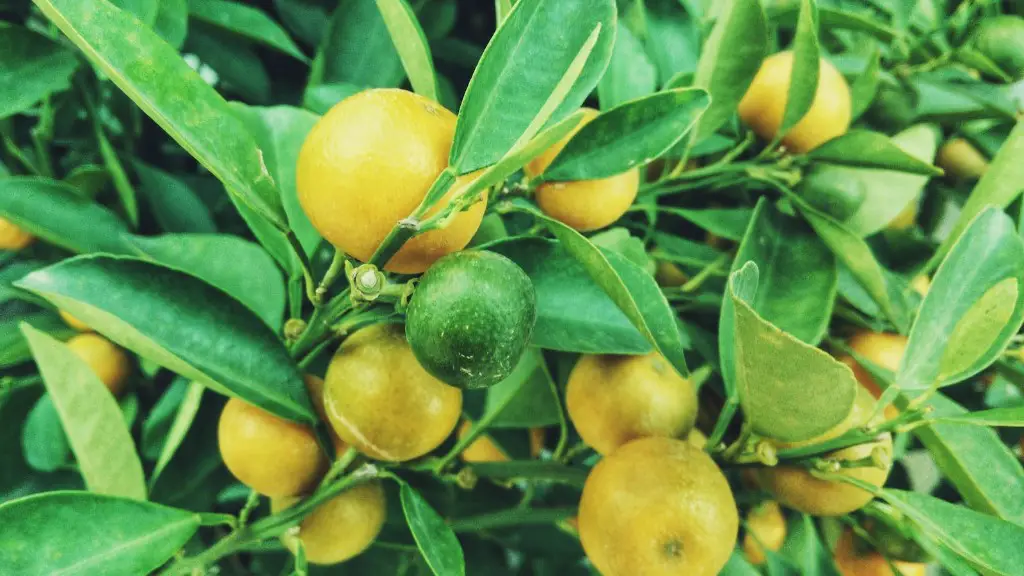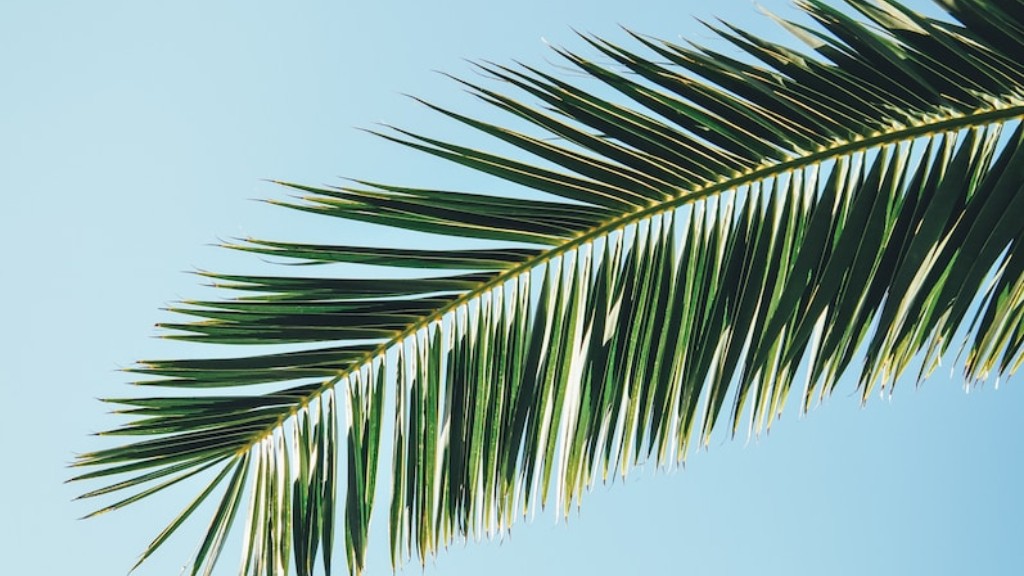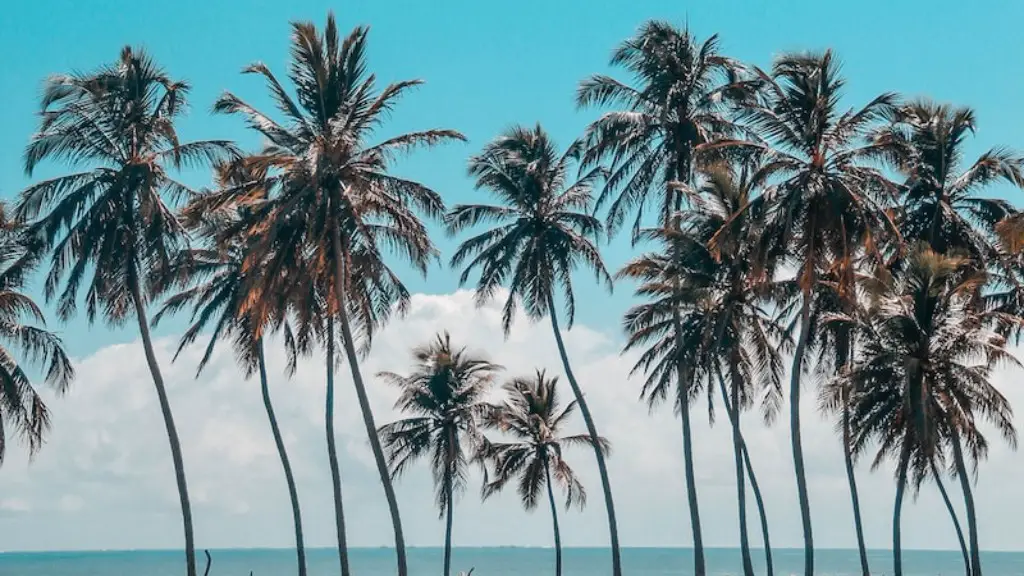The dwarf lemon tree is a popular choice for aspiring gardeners and homeowners who are looking for a way to add a touch of citrus to their yards. Growing this type of tree requires knowledge of the best practices and environment in order to ensure successful growth. In this blog post, we’ll explore the best dwarf lemon trees to grow, as well as how to best care for and maintain them.
When it comes to transplanted lemon trees, ‘Meyer’ and ‘Eureka’ are two of the most popular choices due to their smaller mature size and their excellent yield of juicy, sweet lemons. Meyer lemons are generally a bit sweeter than Eureka lemons, and both can be grown in all USDA zones. Meyer lemons can produce fruit year-round in climates with mild winters. Eureka lemons are better suited for warm climates, and they tend to bear fruit from late spring to early fall.
To ensure that your lemon tree yields a good amount of lemons, it’s important to choose the right location for it. Dwarf lemon trees should be placed in an area that gets at least 8 hours of direct sunlight per day, as direct sunlight helps them grow and produce fruit more efficiently. The soil should be mulched for maximum nutrients and moisture retention, and the tree should be watered at least once a week. Pruning should also be done periodically to promote healthy growth and encourage blooms.
For the purpose of indoor growth, ‘Mouna’ lemon trees are a great option. They are a true dwarf variety, and they are often small enough to fit comfortably into pots. This variety is especially suited to growing indoors, as it usually produces a large crop of juicy lemons even in lower light conditions. Mouna lemon trees need to be watered regularly and should be fertilized once a month during the warmer months.
It’s also important to keep in mind that the best dwarf lemon tree to grow varies depending on the climate and soil conditions. Some varieties do better in warmer climates, while others thrive in cooler climates. It’s best to consult a local gardening expert about the best type of lemon tree for your area. This expert can help you choose the right variety and let you know what kind of environment it needs to grow and thrive.
Pest and Disease Management Strategies
When it comes to successfully growing dwarf lemon trees, it’s important to consider pest and disease management strategies. Unfortunately, these trees are susceptible to a variety of pests and diseases, including citrus greening, citrus canker, and aphids. To keep pests and diseases at bay, it’s important to inspect the tree every few weeks and take note of any signs. Additionally, regular pruning and mulching your soil can help reduce the risk of pests and diseases.
When dealing with lemon tree pests and diseases, it’s best to start with preventive measures. This means keeping the area around the tree clean, removing any dead or dying leaves, and not overwatering the tree. It’s also advisable to apply an appropriate pesticide or fungicide as soon as you notice any signs of pests or diseases. As for controlling aphids, using a soap spray can be an effective solution.
Finally, it’s always important to take into account the climate and soil conditions of the area. If the area is too hot or too humid, this can create an environment that is conducive to pests and diseases. It’s also important to make sure the soil is well-draining, as soggy soil can lead to root rot. Taking these precautions can help you successfully grow a healthy dwarf lemon tree.
Fertilization and Watering Guidelines
When it comes to dwarf lemon tree care, it’s important to follow a few key guidelines to ensure healthy growth. One of the most important things to keep in mind is that these trees need to be fertilized once a month during the warmer months. A general-purpose fertilizer is usually enough to keep the tree healthy, but you may need to use a citrus-specific fertilizer depending on the variety of lemon tree you choose.
Watering is another essential component of lemon tree care. New trees should be watered once a week, and established trees should be watered at least twice a week. It’s important to be mindful of the climate and soil conditions and adjust the watering regimen as needed. In warmer months, when the soil gets dry faster, more frequent watering may be necessary. On the other hand, in cooler months, the soil will hold moisture longer, so it may not be necessary to water as often.
Finally, it’s essential to keep an eye on the soil pH level. Dwarf lemon trees prefer slightly acidic soil, so it’s a good idea to periodically check the soil pH and adjust it to between 5.5 and 6.5, as needed. This can be accomplished by adding lime or sulfur to the soil.
Creating a Supportive Environment
When growing dwarf lemon trees, it’s important to create an environment that is conducive to healthy growth. This means selecting an area with plenty of sunlight and ensuring that the soil pH is within the ideal range. Additionally, it’s important to mulch the soil around the tree to help retain moisture, and regular pruning can help promote healthy growth.
It’s also important to be mindful of the climate and soil conditions in the area. Some varieties of lemon trees are better suited to different climates and soil conditions, so it’s best to consult a local gardening expert about the best type of lemon tree for that area. In addition, regular inspections of the tree can help catch any signs of pests or diseases early, which can make it easier to take the necessary steps to remedy the issue.
Options such as adding screens around the tree, using insecticides and fungicides, and providing adequate ventilation can also help create a supportive environment. Additionally, while regular watering is necessary, it’s also important to keep an eye on the soil moisture level and avoid overwatering the tree.
Choosing the Right Pot Size
When it comes to growing dwarf lemon trees, the size of the pot is an important factor. Too large of a pot can lead to root rot, as the soil will retain too much moisture. On the other hand, if the pot is too small, the tree won’t have enough room to grow. The ideal pot size for dwarf lemon trees is somewhere between 8 and 10 inches in diameter.
When choosing a pot for your dwarf lemon tree, it’s important to select one that has drainage holes at the bottom. This will ensure that the soil doesn’t become soggy from overwatering and help promote healthy root growth. Additionally, it’s important to use a potting soil specifically designed for citrus trees, as this will provide the necessary nutrients for healthy growth.
It’s also important to keep in mind that if you’re planting the tree indoors, you’ll need to take the size of the room into account. Dwarf lemon trees can grow up to 3 feet tall, so make sure there is enough space for the tree to comfortably fit in the room. The room also needs to be well-ventilated and receive plenty of natural sunlight.
Pruning Best Practices
Pruning is an important step in keeping dwarf lemon trees healthy and promoting healthy growth. Regular pruning can help encourage more blooms and encourage the tree to yield more lemons. The best time for pruning is late winter, when the tree is dormant. During pruning, it’s important to remove any dead or dying branches, as well as any water sprouts and branches that are growing towards the center of the tree.
It’s also a good idea to thin out dense areas of the tree and thin any branches that cross over each other or rub together in order to promote air circulation. Additionally, it’s beneficial to prune the tree in a way that allows for more sun exposure. This will get rid of any branches that are blocking the sunlight from getting to the center of the tree.
It’s important to keep in mind that pruning should be done carefully and strategically. Too much pruning can stunt the growth of the tree, so it’s best to prune sparingly. Additionally, it’s best to use clean, sharp pruning shears and sterilize them after each use.




